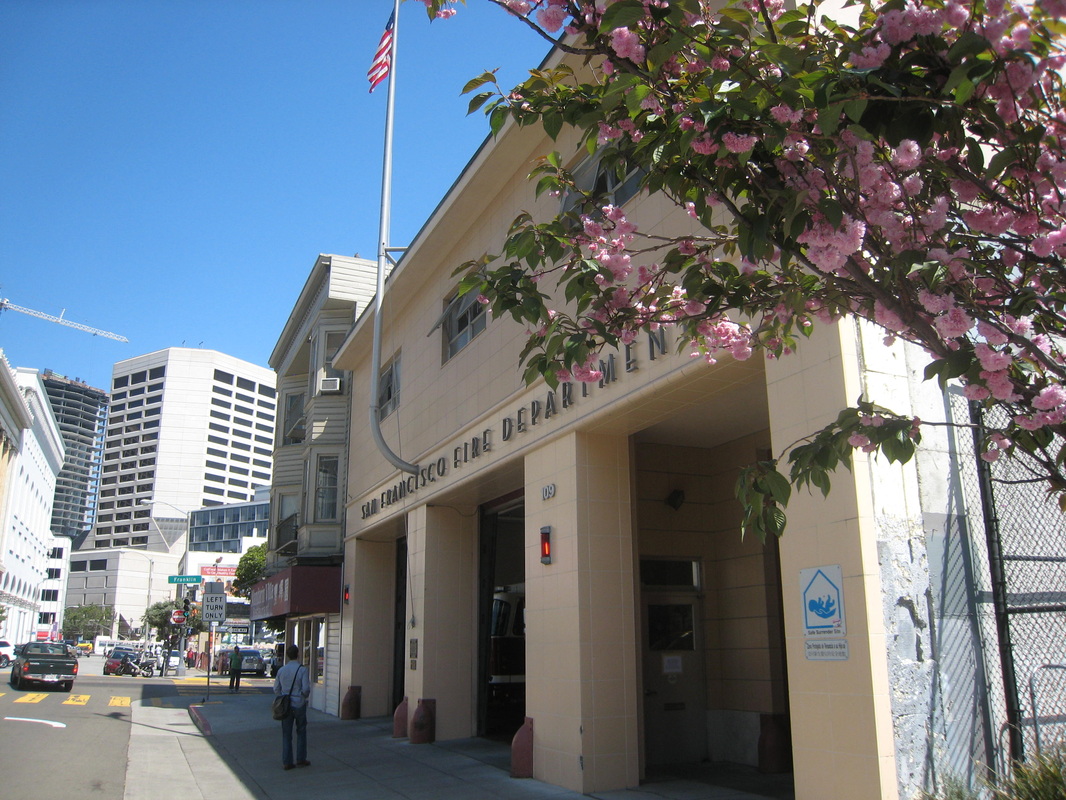Neighborhood Fire Stations
Many of our neighborhood fire stations are in need of seismic upgrades and other health and safety improvements. It is critical that our first responders are housed in healthy, safe, and seismically sound facilities – thus providing essential emergency response services to people who need them during times of crisis.
The Earthquake Safety and Emergency Response Bond Program is seismically retrofitting and making other necessary health and safety improvements to ensure that selected stations are fully functional after a major earthquake.
Four central principles guided the selection of neighborhood fire stations and the extent of improvements: assure continuous fire protection coverage during construction; prioritize emergency response improvements; maximize the effectiveness of construction funds; limit disruption to operations.
$64 million was dedicated to the Neighborhood Fire Station program from the ESER 2010 bond. ESER 2010 identified improvements to 29 of the 42 neighborhood fire stations which are located in every district of San Francisco. This was consistent with the ESER 2010 bond report which indicated that the program would complete seismic improvements to about 50 percent of the City’s neighborhood fire stations. A preliminary list of projects to be completed by the ESER 2010 program was identified by Public Works and the Fire Administration, and was accepted by the Fire Commission in September 2010.
Improvements were successfully implemented at these 29 stations. The work was being carefully phased to maintain fire department service levels throughout the City.
Project types and ESER 2010 work
Neighborhood Fire Station projects were characterized as seismic, comprehensive or focused scope.
Seismic Improvement Program
Fire stations that house active emergency vehicles or emergency communications facilities are essential facilities. City plans require the fire stations to be substantially operational after a major earthquake. Seismic improvement projects upgraded the fire stations to assure they remain functional after a major earthquake.
While the seismic improvement project was underway, the project also completed comprehensive renovations to address all emergency response, health and safety issues. Major building systems were also renovated or upgraded. The seismic improvement and comprehensive renovation required temporary closure of the station and redeployment of fire department resources. Station closures occurred in a phased manner to ensure continuous neighborhood service.
Seismic projects were being performed at two neighborhood stations: Station 16 at 2251 Greenwich Street and Station 5 at 1301 Turk Street.
Comprehensive Renovation Program
Many fire stations do not require seismic improvements. This program completed comprehensive renovation projects that addressed all Emergency Response and Health & Safety issues at each facility that did not require a seismic improvement project. Major building systems were also renovated or upgraded to provide an expected service life of 15 years. Comprehensive renovation required temporary closure of the station and redeployment of Fire Department resources. Station closures occurred in a phased manner to ensure continuous neighborhood service.
Comprehensive renovations were completed at Station 36 at 109 Oak Street and at Station 44 at 129 Grand Street.
Focused Scope Program
This program corrected “severe” deficiencies, allowing the facility to remain substantially functional for 8-10 years, until such time funds are available for a comprehensive renovation. Depending on the scope of work, most focused scope renovations were likely to require temporary station closure. Station closures occurred in a phased manner to ensure continuous neighborhood service.
Sixteen neighborhood focused scope fire stations included roof construction, repainting and refurbishing, mechanical and general facilities upgrades. Also, five stations were scheduled to receive new backup emergency generators.
Documents and presentations
- Station 16 Board of (Permit) Appeal Hearing Presentation June 24, 2015
- Station 16 Categorical Exemption Appeal Hearing Presentation May 19, 2015
- Station 5 Civic Design I & II (Combined) April 20, 2015
- Update to the SF Fire Commission May 28, 2015
- Update to the SF Fire Commission August 2013
- Station 16 Civic Design Review Phase 2 - June 17, 2013
- Station 36 Civic Design Review Phase 3 - April 15, 2013
- Station 44 Civic Design Review April 15, 2013 - Informational Review
- Station 16 Civic Design Review Phase 1 - January 14, 2013
- Station 16 Civic Design Review Phase 1 - Presentation November 19, 2012
- Station 16 Civic Design Review October 15, 2012 - Concept
- Fire Boat Station 35 Presentation October 3, 2012
- Fire Boat Station 35 Outreach Notice October 3, 2012
- Update to the SF Fire Commission October 2012
- Station 36 Civic Design Review Phases 1 & 2 - September 17, 2012 - Design Elements
- Station 36 Civic Design Review Phases 1 & 2 - September 17, 2012 - Bond Info
- Update to the SF Fire Commission April 26, 2012
- Update to the SF Fire Commission September 23, 2010
Explore the other ESER 2010 Bond Components
What is the ESER bond program?
Earthquake Safety and Emergency Response (ESER) is San Francisco's bond program to strategically address critical public safety needs in the City. The program identifies seismic improvements and upgrades to City-owned facilities that are needed to help safeguard San Francisco. Learn more here.








